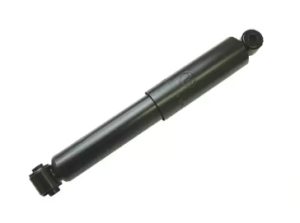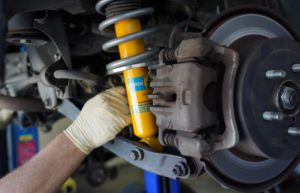Choosing the right shock absorbers is one of the most important decisions you can make for your vehicle’s handling, comfort, and safety. Whether you’re a daily driver seeking a smooth ride or an enthusiast aiming for sharper performance, understanding the difference between OE (Original Equipment) and performance shock absorbers is essential. Each type serves a different purpose, uses different technology, and offers distinct advantages depending on your driving style and needs. For quality replacements, you can Buy Shock Absorbers online from trusted suppliers.
This article examines how OE and performance shocks compare in construction, behavior, cost, and longevity — helping you decide which option is right for your vehicle.
What Are OE Shock Absorbers?

OE shock absorbers are the standard components installed by your vehicle’s manufacturer. Their primary goal is comfort, stability, and reliability under everyday driving conditions. OE units focus on balancing:
-
Ride comfort
-
Noise reduction
-
Predictable handling
-
Long service life
They are designed to match the suspension geometry, weight, and driving characteristics of the vehicle, making them ideal replacements for stock setups.
What Are Performance Shock Absorbers?
Performance shock absorbers are engineered for drivers who demand improved handling, sharper steering response, and better control at higher speeds. They typically feature stiffer damping, enhanced materials, and technologies such as:
-
Adjustable rebound/compression
-
Gas-charged dampers
-
Heavy-duty seals
-
Monotube construction
These upgrades help reduce body roll, brake dive, and squat during acceleration, making them suitable for sporty driving or modified vehicles.
Key Differences Between OE and Performance Shocks
1. Construction and Technology
| Feature | OE Shock Absorbers | Performance Shock Absorbers |
|---|---|---|
| Construction | Mostly twin-tube | Usually monotube or advanced twin-tube |
| Damping | Soft to medium | Medium to firm, often adjustable |
| Materials | Standard components | Reinforced, high-strength alloys |
| Ride Quality | Smooth and comfortable | Firm, responsive, sharper feedback |
| Heat Dissipation | Moderate | Superior — ideal for aggressive driving |
2. Handling and Ride Characteristics
OE shocks aim for comfort and stability, while performance shocks focus on precision and control.
OE Characteristics:
-
Softer damping reduces vibration
-
Minimal road feedback for a relaxed ride
-
More body roll and weight transfer
Performance Shock Characteristics:
-
Tighter control during cornering
-
Improved high-speed stability
-
Reduced braking dive and body roll
-
More connected and sporty feel
3. Durability and Maintenance
Performance shocks are typically more durable due to their stronger construction. However, because they are stiffer and designed for dynamic loads, they may wear faster if used on rough roads daily.
| Aspect | OE Shocks | Performance Shocks |
|---|---|---|
| Lifespan | 60,000–100,000 km | 50,000–80,000 km (varies by usage) |
| Maintenance | Minimal | Higher for adjustable or racing shocks |
| Best Conditions | Highway, city, mixed driving | Sporty driving, track days, mountain roads |
4. Cost Comparison
OE shocks are more affordable and ideal for restoring factory ride comfort. Performance shocks generally cost more due to premium engineering and additional features.
Typical Price Ranges:
-
OE shocks: Budget to mid-range
-
Performance shocks: Mid-range to premium, depending on brand and adjustability
When Should You Choose OE Shock Absorbers?

OE shocks are the better choice if you:
-
Want factory-level comfort and quietness
-
Drive mostly in the city or on highways
-
Don’t require aggressive cornering performance
-
Prefer lower maintenance and longer lifespan
-
Want the most cost-effective replacement option
Ideal for commuting, family vehicles, and daily-use cars.
When Should You Choose Performance Shock Absorbers?
Performance shocks are ideal if you:
-
Enjoy dynamic or sporty driving
-
Drive on winding roads or participate in track days
-
Have upgraded wheels, tires, or suspension components
-
Want sharper steering and better cornering grip
-
Want adjustable suspension tuning
Best suited for performance cars, modified vehicles, and drivers who want enhanced control.
Pros and Cons Summary
| Type | Pros | Cons |
|---|---|---|
| OE Shocks | Comfortable, durable, affordable, low maintenance | Softer handling, less control under high load |
| Performance Shocks | Excellent handling, reduced body roll, adjustable options | Higher cost, firmer ride, faster wear on poor roads |
How to Decide What’s Right for You
Ask yourself the following:
-
What is my driving style?
-
Calm, daily use → OE
-
Enthusiastic, sporty → Performance
-
-
What are my priorities?
-
Comfort → OE
-
Control and precision → Performance
-
-
Do I drive on rough or smooth roads?
-
Poor roads → OE
-
Good roads / track → Performance
-
-
Is my vehicle modified?
-
Yes → Performance
-
No → OE
-
Conclusion
Both OE and performance shock absorbers serve important roles — choosing between them depends on your comfort expectations, driving habits, and vehicle setup. OE shocks deliver a smooth, quiet, factory-fresh ride, while performance shocks offer sharper handling, better responsiveness, and improved driving dynamics.
Whether you’re restoring your suspension or upgrading it for enhanced performance, high-quality parts ensure safety and reliability. When you’re ready to replace or upgrade, you can Buy Shock Absorbers online from reputable suppliers that offer OE-quality and performance-grade options.